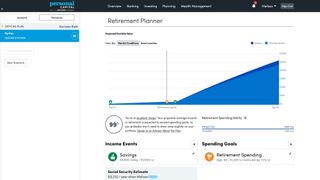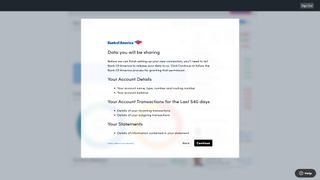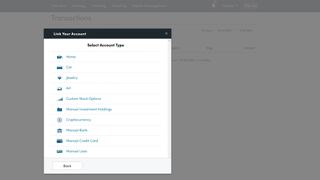Tom's Guide Verdict
Personal Capital aggregates the picture of your financial accounts, but has limited tools for budgeting and planned savings.
Pros
- +
Clearly defined terms around linked accounts
- +
Easy-to-read visual presentation
Cons
- -
No customization
- -
Can only set a single monthly budget
- -
No way to set a budget by spending category
Why you can trust Tom's Guide
Personal Capital by Empower is the rare example of a company that sells a slate of paid advisory services, but also offers a useful free component. The web- and app-based tools provide top-level financial snapshots and tracking, but don’t go far enough for specific activities like budgeting and saving.
From the outset, you won’t mistake Personal Capital, part of Empower Retirement’s suite of financial services, as anything but a wealth management advisor. In fact, its web site makes it hard to separate the noise related to its paid services from the value offered by the company’s free services, and even those free services feel like they’re surface level. Once inside, though, you have access to tracking and investment tools and a keep-it-simple take on budgeting and savings. However, as our Personal Capital review will show, it’s missing a few things found in the best budgeting apps.
Personal Capital: Cost
Personal Capital has a free account to view your net worth, set a budget, and plan savings. Where the company makes its money is if you sign up with its wealth management advisory services, which cost a percentage of how much money they’ll be managing. The fees are pricey, and start at 0.89% for clients with a minimum of $100,000 (and up to $1 million) to manage. That fee gives you access to Personal Capital’s portfolio funds and to a team of financial advisors (a portfolio of more than $200,000 gets you two dedicated advisors) that will guide you on your financial journey.
Personal Capital review: Features
At the heart of Personal Capital’s free services is its Dashboard view of your synced banking and investment accounts, a handy way to view the bigger picture of your financial health and cash flow. The savings planner helps you jump start saving for retirement or an emergency fund, while its Investment Checkup will analyze your portfolio allocation and compare to Personal Capital’s recommendations.
The Fee Analyzer looks for hidden or high fees in your linked investment accounts and the Retirement Planner gives you an idea of what’s possible. Make no mistake–all roads lead to trying on bigger and better Personal Capital services. For example, after we mocked up our retirement scenario, we were prompted to schedule a free 30-minute call with an advisor.

The inclusion of a basic tier of monthly spending budget helps flesh out the finance-heavy perspective of the service, and the investment tools might complement or confirm what your own investment brokerage already offers.
Personal Capital review: Available Help
Since the service is more about aggregation and less about action, it comes as no surprise that written assistance is thin. A pop-up help bot resides at the bottom of every screen; you can also leave a message for an agent.
Personal Capital review: Ease of use
To start a free account, simply enter a username and email. The free account gives you access to the Personal Capital Dashboard and all of its tools, including views of your net worth and transactions, sorted by account type.

Next you’ll answer a few questions about yourself, which the service would use to populate retirement and savings recommendations (we skipped this). Then, we added accounts, a simple process of selecting your institution and connecting to that institution to authenticate your account info. We liked how Personal Capital was explicitly clear about what info it was accessing from each institution.

Once in the service, you can also add the value of a home (via a Zillow integration), your portfolio, and other assets including cryptocurrency and car loans, and non-digital assets you can track manually – including art, jewelry, and cash. The investing and planning guidance depends on how much you link and share, of course.

We liked the clean, logical structure of Personal Capital. The right side of the page by default shows a slide-out side panel that shows your net worth, assets, liabilities, and accounts all in one place. The rest of the page is divided into different widget blocks that show snapshots of different aspects of your account and the market. Personal Capital was the only service to offer a daily account update upon log-in (and you can have that sent by email).
Personal Capital’s budgeting feature is listed under the Banking tab, and is visible on the dashboard page as a widget. The tool is very limited, but it does have value if you want to break your budget down into simple terms. As in, “I want to spend X amount a month.” Nothing more. The monthly budget is the only amount you can edit. Everything else is automatically categorized and imported from your transaction data. It shows your expenses across the past 30 days, and compares against the previous month.

The Savings Planner operates differently from other services. In Personal Capital, the Savings Planner targets your investments for retirement, savings for an emergency fund, and debt paydown. But it doesn’t help you with planned savings for vacations or other life events or desires.
Personal Capital review: Mobile
The mobile app provides visual snapshots, but it isn’t constructed where you have many actionable items. We could view our monthly budget and our spending by category, and could edit our target spend for the month, but that’s about it for budgeting. In other words, the same functionality as on the web browser, just a slightly different visual presentation. You can also view cash flow, transactions, your net worth, and view your portfolio.
Personal Capital review: Verdict
Personal Capital has an attractive veneer and some helpful tools to view your assets, but it’s not a substitute for more do-it-yourself-minded personal finance packages like Mint or Simplifi, or dedicated budgeting software like YNAB. Any of those three packages will do a better job at digging into where your money is going, and how much you spend a week. All Personal Capital does is give you an aggregate total to budget for transaction expenses in a given month. That’s a far cry from YNAB’s active approach, where you assign every available dollar to a transaction or future transaction.
Adding accounts was a smooth experience, with the clearest explanations we’d seen of what you were granting access to and getting in return. And the dashboard provides a functional and crisp view of your finances and cash flow. But ultimately we found Personal Capital is big on showing you glamorous charts, but light on actionable functionality.
Melissa Perenson is a freelance writer. She has reviewed the best tax software for Tom's Guide for several years, and has also tested out fax software, among other things. She spent more than a decade at PC World and TechHive, and she has freelanced for numerous publications including Computer Shopper, TechRadar and Consumers Digest.

